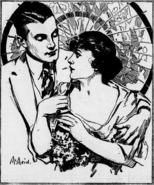Kao Corporation
Appearance
This article needs additional citations for verification. (October 2011) |
 | |
 Head office | |
| Company type | Public (K.K) |
|---|---|
| TYO: 4452 TOPIX Large 70 Component | |
| Industry | Personal care, Cosmetics |
| Founded | June 1887 Nihonbashi-Bakurocho, Tokyo, Japan |
| Founder | Tomiro Nagase |
| Headquarters | , |
| Revenue | (consolidated, March 2011, 83 yen/US dollar) |
(consolidated, March 2011, 83 yen/US dollar) | |
(consolidated, March 2011, 83 yen/US dollar) | |
| Total assets | (consolidated, March 2011, 83 yen/US dollar) |
| Total equity | (consolidated, March 2011, 83 yen/US dollar) |
Number of employees | 34,743 (consolidated) 5,924 (non-consolidated) |
| Website | www |
Kao Corporation (花王株式会社, Kao Kabushiki-gaisha) is a chemical and cosmetics company headquartered in Nihonbashi-Kayabacho, Chūō, Tokyo, Japan.
History
Kao was established in 1887 by Tomiro Nagase as a manufacturer of domestic toiletry soap. Until 1940, they were known as Nihon Yuki Company (日本有機株式会社), changing their name then to Kao Soap Company (花王石鹸株式会社), and finally in 1985 to Kao Corporation.
- 1960s and 1970s
- During the 1960s and the 1970s, the company expanded to Taiwan and ASEAN countries, and also to oleochemicals in order to complement their main business. During this time, the company launched household products, laundry products, and industrial products to expand its revenue base (such as New Beads detergent, Humming fabric softener, Haiter bleach and Magiclean household cleaners).
- 1980s
- During the 1980s, its products Merries diapers, Attack detergent, Biore daily skincare and Biore U daily body care, Curel (1986) and Sofina cosmetics were launched. During this time, Kao engaged in several joint ventures (haircare in Europe, Nivea in Japan with Beiersdorf), and acquisitions (Andrew Jergens Company in 1988, Goldwell AG in 1989) in North America and Europe. During this period, Kao also expanded to the manufacture of floppy disks.
- 1990s and 2000s
- During the 1990s and 2000s, the company expanded into China and Vietnam—countries that, during that time, were opening up their economies to the rest of the world. Also, the company expanded into food products with Econa and Healthya. It also continued to acquire businesses (John Frieda[1] in 2002, Molton Brown[2] in 2005 and Kanebo Cosmetics[3] in 2006).
- In September 2009 Kao recalled its Econa cooking oil products after it was revealed in the media that one of its ingredients becomes carcinogenic after digestion. According to the media reports, Econa contained from 10 to 182 times the amount of glycidol fatty acid esters found in regular cooking oils. Kao also removed the tokuho, or government "healthy food" designation from the product's label.[4]
- Advertising
-
This picture was part of an advertising campaign by the Andrew Jergens Company in 1917. It was given out for every purchase of a cake of Woodbury's Facial Soap. Valid in the United States and Canada through 5 October 1917
Brand ownership
- Attack
- Ban
- Biore
- Biozet
- Curel
- Goldwell
- Guhl
- Healthya
- Jergens
- John Frieda
- Kanebo
- Kate
- KMS
- Laurier
- Liese
- Magiclean
- MegRhythm
- Merries
- Merit
- Molton Brown
- Oribe
- Segreta
- Sofina
- Success
References
- ^ "Kao Agrees to Acquire John Frieda Professional Hair Care". Business Wires. 2002-08-01. Archived from the original on 2012-07-09. Retrieved 2009-11-18.
- ^ "Charles Denton ex-CEO Molton Brown". BBC. 2005-07-10. Retrieved 2009-01-06.
- ^ "Kao purchases Kanebo Cosmetics". Cosmetics Design - Europe. Retrieved 2009-11-18.
- ^ Brasor, Philip, "Media Mix: Japanese food-safety label protects business foremost, and not people", Japan Times, November 1, 2009, p. 11.
External links
Wikimedia Commons has media related to Kao Corporation.

